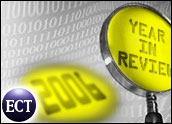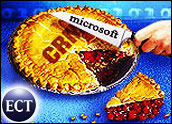
In a nutshell, here’s a look back at the CRM industry’s last few years:
- 2001 was the year Siebel reigned supreme;
- 2002 was the year the recession took hold and companies held off on new CRM and other IT investments;
- 2004 was the year of mergers and acquisitions — a few hostile and some not — among the biggest vendors in the industry; and
- 2005 was the year those firms that remained standing milked their “safe” status for all that it was worth.
How would one characterize 2006 for CRM vendors and buyers? More importantly, what does it mean for the industry going forward?
Trends have a way of reversing themselves, often with little notice. For instance, while the largest vendors may have seemed surprisingly unstable after Oracle’s hostile bid for PeopleSoft, that perception is largely gone.
Companies that were capitalizing on that — especially SAP — are shifting gears to position themselves, once again, according to their functions and features.
Other trends, however, have greater staying power. Software as a Service (SaaS) is an indelible part of thelandscape now. In 2001 — a year when Salesforce.com was just a scrappy little company — that would have been hard to believe.
The Year About Nothing
2006, to borrow from “Seinfeld,” was the year about nothing. This is actually good news.
“2006 was a quiet year in the industry,” Jim Dickie, managing partner at CSO Insights, told CRM Buyer, adding, “A lot of companies spent their time and resources solidifying their base investments.”
Looking Back
This year, Dickie predicted, firms will spend more resources to maximize existing systems.
“Think about the way someone would build a house,” he noted. “You put up the foundation, roof and walls first. Then you start to think about customizing the rooms for your own needs.”
Companies were in reflective mode last year for multiple reasons. For one, the advent of on-demand opened new options for them.
“Firms were revisiting decisions already made because they had new — and easier — implementation choices,” Dickie stated. “So, they had the space to ask themselves, ‘Is this the right system to continue to use?'”
According to the Stats
In a survey that CSO Insights has not yet published, Dickie asked companies to take stock of their existing CRM investments.
“Sixty-two percent [of respondents] said CRM was improving sales force management and manager communications; 47 percent said it was improving their forecasting abilities; [and] 45 percent said it was reducing the administrative burden on the sales force,” he explained.
It was interesting data, Dickie concluded, but it didn’t address what respondents said were their key concerns or problems: improving revenues and sales effectiveness.
“The other data points — about reducing the administrative burden, for instance — [are] nice, but ultimately all it means is that sales has more time to make average revenue producing sales calls,” he said. “What they need is to make great revenue producing sales calls.”
Banner Year for Add-Ons
As a result, Dickie noted, 2007 will be a banner year for sales of additional tools.
“Seventy percent of the respondents said they want to add to their systems,” he stated. Categories of projected spend include lead generation optimization, integration of CRM with marketing automation and sales management analytics.
Interest was stoked by the potential of higher-end analytical applications, agrees Suresh Vittal, senior analyst at Forrester Research — especially in the marketing space, which has typically lagged in development compared to sales and service.
“Companies started paying attention to the business case of having real time analytics at the customer touch point,” he told CRM Buyer, adding, “What I expect in 2007 is that we will see some strong, large-scale deployments in this technology as a result. And with Web 2.0 technologies beginning to gain momentum, we will also see a lot more of Web-based behavioral targeting.”
Ignoring the Business User
Not all analysts interpreted the lack of major developments as a year of rebuilding and refocusing.
“2006 was the year vendors ignored the business user,” John Ragsdale, vice president of research for theService and Support Professionals Association, told CRM Buyer.
“In both 2005 and 2006, the leading players spent far too much time pitching infrastructure and stopped the functional innovation we expect in CRM,” he said.
The result, though, is a projection similar to what is expected to happen this year, Ragsdale noted.
“I really think that we are going to see a much bigger push towards business users, and greater functionality and innovative capabilities in software,” he said.
There are signs of this already — if only anecdotal. “We see more and more business users trying to sneak in approvals for applications,” Ragsdale said. “They are trying to cut the buying cycle down by six months in order to get the functionality that they need.”
A Buying Spree?
Projected areas of spend, he stated, include almost anything Web 2.0. The new technology is likely to spur a buying spree reminiscent of the early 1990s, when the first generation of CRM applications came to market, he said.
“A lot of the technology out there — such as community platforms — is not yet mature,” Ragsdale commented. “It is like the early days of CRM and e-service. You have to buy each piece of it and integrate it together.”
The technology is evolving so fast and adoption happening so quickly, he concluded, “by 2008, we will have community saturation.”














































Social CRM
See all Social CRM